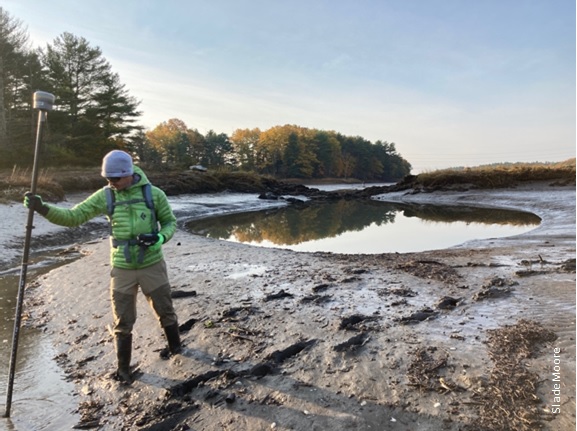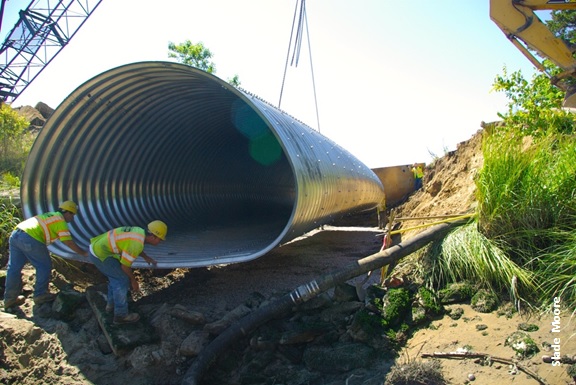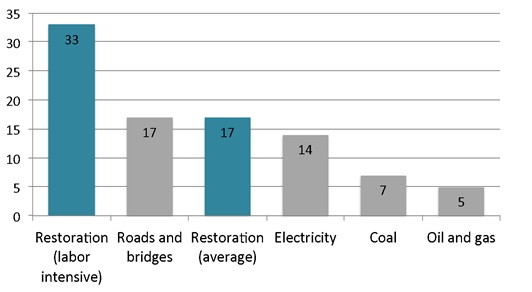
The Need for Tidal Wetland Resilience
Tidal wetlands include salt marshes, mud and sand flats, and rocky shorelines, among other types. Together, they provide protection from coastal storm and flood damage, a place for pollutants to breakdown, and opportunities for recreation and commercial harvesting. They also support diverse types fish and wildlife, some of whom require the unique conditions found only tidal habitats. Many of Maine's tidal wetlands show impacts by a variety of activities that began centuries ago and include historical agricultural practices, construction of transportation networks and dams, and coastal development. What's most alarming is that the damage caused by these activities can interfere with the ability of Maine's tidal wetlands to keep pace with sea level rise. Salt marshes appear particularly vulnerable. Left uncorrected, poor resilience to sea level rise will cause many of these wetlands to drown. Maine Coastal Program is working to prevent these losses by focusing on improving habitats damaged by roads and other structures that restrict the tides.

MCP's Response
Tidal restrictions represent one of the most damaging types of impacts because they impair processes that help tidal wetlands like marshes keep pace with sea level rise. Correction of tidal restrictions is an excellent means to encouraging wetland resilience to sea level rise because the source of impact is often localized to a road or other structure. Nevertheless, the challenges of reversing centuries of damage to Maine's tidal habitats are complex and especially daunting given the number of sites requiring restorative action. For instance, about 90% of Maine's 800-odd tidal road crossings restrict the ebb and flow of the tides. These challenges are necessary to overcome if we're to achieve healthy, climate-resilient conditions into the future.
The Maine Coastal Program is working on several fronts to increase the quality and pace of projects that restore wetland resilience statewide:
- On-the-ground projects: We provide technical and financial support to local communities and diverse partner organizations who want to replace or remove road crossings that are tidal restrictions.
- Tools and methods: We create new tools to assess restoration needs, evaluate opportunities, and plan for future action, like the Maine Tidal Restriction Atlas and the Maine Stream Habitat Viewer. We also develop ways for coastal communities to integrate climate resilience into local planning, like The CoastWise Approach for tidal road crossings.
- Coastal monitoring: We lead the Maine Salt Marsh Monitoring Network, which uses long-term study sites to assess the impacts of sea level rise and inform restoration and conservation investments.
- Collaborative Networks: We work with partners at the local, state, and regional level so projects benefit from a well-rounded process that's participatory and features the best expertise available. We also convene state and regional technical provider networks so experts can share the latest information about restoration methods, resources, challenges, and opportunities.

The Restoration Economy
Restoration supports conservation objectives while providing jobs at highly competitive rates. On-the-ground restoration projects need people who work in construction, engineering, surveying, horticulture, landscape architecture, and the legal field. Services, materials, and supporting industries are often sourced from the community or home state so restoration dollars can stay local.

Jobs created per $1 million invested: Restoration ranks highly among traditional sectors.1
Learn More
For more information about Maine Coastal Program's restoration programming, contact the Habitat Restoration Coordinator, Slade Moore at: smoore@bioconserve.net.
1Edwards, P.E.T., A.E Sutton-Grier, and G.E Coyle. 2012. Investing in Nature: Restoring Coastal Habitat, Blue Infrastructure, and Green Job Creation. Marine Policy.